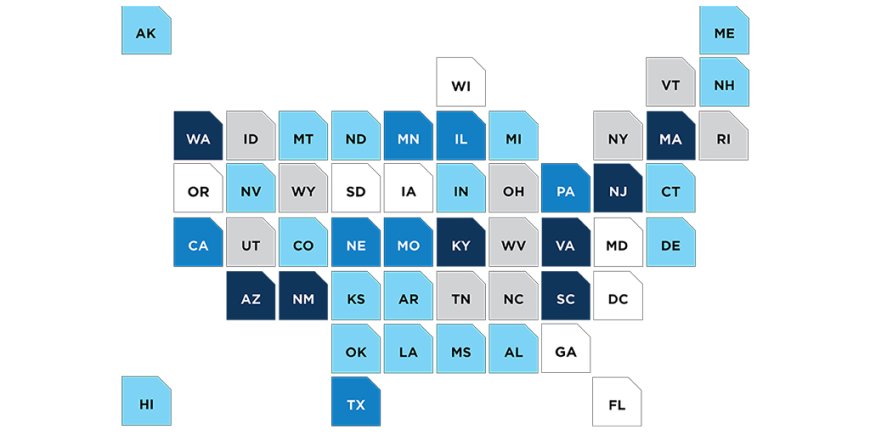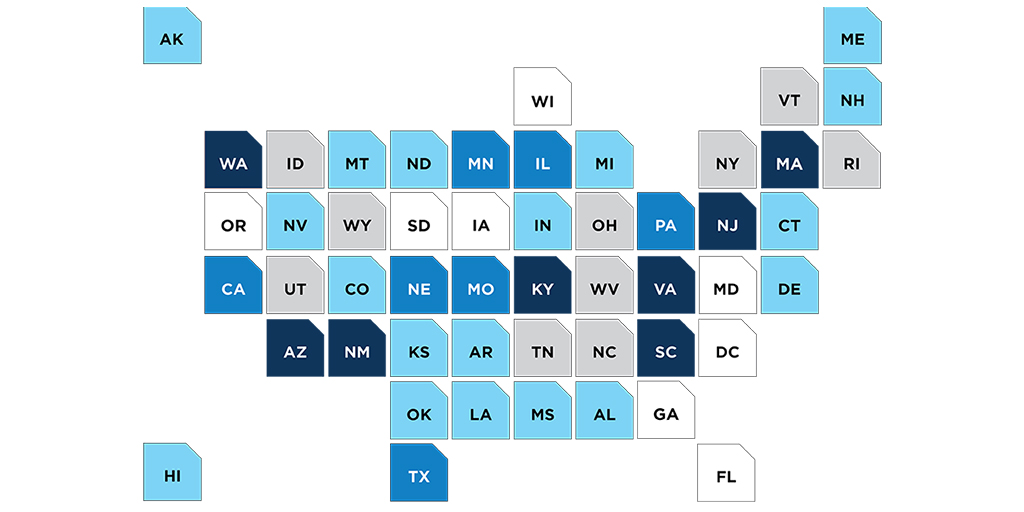States’ Preschool Development Grant Applications Reveal Priorities for Stronger Data Integration – Child Trends
States’ Preschool Development Grant Applications Reveal Priorities ... Child Trends

Comprehensive Data Integration for Early Childhood Programs

Comprehensive, coordinated data can help policymakers answer critical questions about equitable access to early childhood programs, workforce development needs, or school readiness. However, these data are not always accessible or integrated in ways that give policymakers the whole story of children’s experiences during the early years. In fact, early childhood data in most states are fragmented and uncoordinated, are often housed in multiple systems, and are managed by different state and federal agencies. For example, data on children’s participation in early learning programs may be housed in a different data system than data about children’s development prior to starting kindergarten. As a result, policymakers may be unable to answer questions about how children’s early experiences do or do not support their later development and may have limited data to inform the improvement of services and systems that serve children from birth to school entry. By bringing together this siloed information—in other words, by integrating these data—data systems can give policymakers a more comprehensive understanding of programs’ accessibility and the degree to which they are achieving their goals.
Spurred by federal investments, the past decade has seen progress in data integration and data system development that has allowed states to begin to address these critical policy questions. Multiple rounds of Race to the Top Early Learning Challenge (2011, 2012, 2013) and Preschool Development Grants (2014, 2018, 2019, 2022) created opportunities to examine longitudinal trends to assess whether early care and education (ECE) policies are leading to greater equity and improved program quality.
About this brief
Through our analysis of states’ applications for Preschool Development Grant funding, we examine and uplift the ways in which state leaders are using the latest round of Preschool Development Grant funding to address data integration needs and advance the use of early childhood data to guide early childhood policies and practices.
Of particular interest are states’ efforts to develop early childhood integrated data systems (ECIDS), as well as coordinated service eligibility and applications systems. An ECIDS coordinates information about program participation, child care supply, and workforce characteristics from multiple data systems. When combined, these data can be used to help policymakers, practitioners, and researchers understand which families have access to programs, where there are service and workforce gaps, how children fare later in their educational trajectories, and what programs best meet the needs of children and families. Note that this analysis is not a comprehensive scan of the national scope of early childhood data integration, but rather a scan of those efforts funded through the 2022 round of PDG B-5 grants.
The brief first provides an overview of these grants, the data integration activities they fund, and the methodology used for this analysis. The next section summarizes states’ reported use of PDG funds to plan, implement, or expand early childhood data integration.
SDGs, Targets, and Indicators in the Article
1. SDGs Addressed or Connected to the Issues Highlighted in the Article
- SDG 4: Quality Education
- SDG 10: Reduced Inequalities
- SDG 17: Partnerships for the Goals
The article discusses the need for comprehensive and coordinated data to address issues related to equitable access to early childhood programs and workforce development needs. This aligns with SDG 4, which aims to ensure inclusive and equitable quality education and promote lifelong learning opportunities for all. The fragmented and uncoordinated early childhood data mentioned in the article also highlight the need to reduce inequalities (SDG 10) in accessing and utilizing early childhood services. Additionally, the article mentions federal investments and partnerships (SDG 17) that have contributed to progress in data integration and system development.
2. Specific Targets Under the SDGs Based on the Article’s Content
- Target 4.2: By 2030, ensure that all girls and boys have access to quality early childhood development, care, and pre-primary education so that they are ready for primary education.
- Target 10.2: By 2030, empower and promote the social, economic, and political inclusion of all, irrespective of age, sex, disability, race, ethnicity, origin, religion, or economic or other status.
- Target 17.16: Enhance the global partnership for sustainable development, complemented by multi-stakeholder partnerships that mobilize and share knowledge, expertise, technology, and financial resources.
The article emphasizes the importance of data integration to assess the accessibility and effectiveness of early childhood programs, which aligns with Target 4.2 under SDG 4. It also highlights the need to address inequalities in accessing early childhood services, which relates to Target 10.2 under SDG 10. The mention of federal investments and partnerships reflects the importance of multi-stakeholder collaborations to achieve sustainable development, corresponding to Target 17.16 under SDG 17.
3. Indicators Mentioned or Implied in the Article
- Indicator 4.2.1: Proportion of children under 5 years of age who are developmentally on track in health, learning, and psychosocial well-being, by sex.
- Indicator 10.2.1: Proportion of people living below 50 percent of median income, by age, sex, and disability.
- Indicator 17.16.1: Number of countries reporting progress in multi-stakeholder development effectiveness monitoring frameworks that support the achievement of the sustainable development goals.
The article does not explicitly mention specific indicators. However, it implies the need for indicators related to children’s development and well-being (Indicator 4.2.1) to assess the impact of early childhood programs. It also suggests the importance of indicators related to income inequality (Indicator 10.2.1) to measure progress in reducing disparities in accessing early childhood services. Lastly, the mention of federal investments and partnerships indicates the relevance of monitoring frameworks (Indicator 17.16.1) to track progress in achieving sustainable development goals through collaborative efforts.
Table: SDGs, Targets, and Indicators
| SDGs | Targets | Indicators |
|---|---|---|
| SDG 4: Quality Education | Target 4.2: By 2030, ensure that all girls and boys have access to quality early childhood development, care, and pre-primary education so that they are ready for primary education. | Indicator 4.2.1: Proportion of children under 5 years of age who are developmentally on track in health, learning, and psychosocial well-being, by sex. |
| SDG 10: Reduced Inequalities | Target 10.2: By 2030, empower and promote the social, economic, and political inclusion of all, irrespective of age, sex, disability, race, ethnicity, origin, religion, or economic or other status. | Indicator 10.2.1: Proportion of people living below 50 percent of median income, by age, sex, and disability. |
| SDG 17: Partnerships for the Goals | Target 17.16: Enhance the global partnership for sustainable development, complemented by multi-stakeholder partnerships that mobilize and share knowledge, expertise, technology, and financial resources. | Indicator 17.16.1: Number of countries reporting progress in multi-stakeholder development effectiveness monitoring frameworks that support the achievement of the sustainable development goals. |
Behold! This splendid article springs forth from the wellspring of knowledge, shaped by a wondrous proprietary AI technology that delved into a vast ocean of data, illuminating the path towards the Sustainable Development Goals. Remember that all rights are reserved by SDG Investors LLC, empowering us to champion progress together.
Source: childtrends.org

Join us, as fellow seekers of change, on a transformative journey at https://sdgtalks.ai/welcome, where you can become a member and actively contribute to shaping a brighter future.







